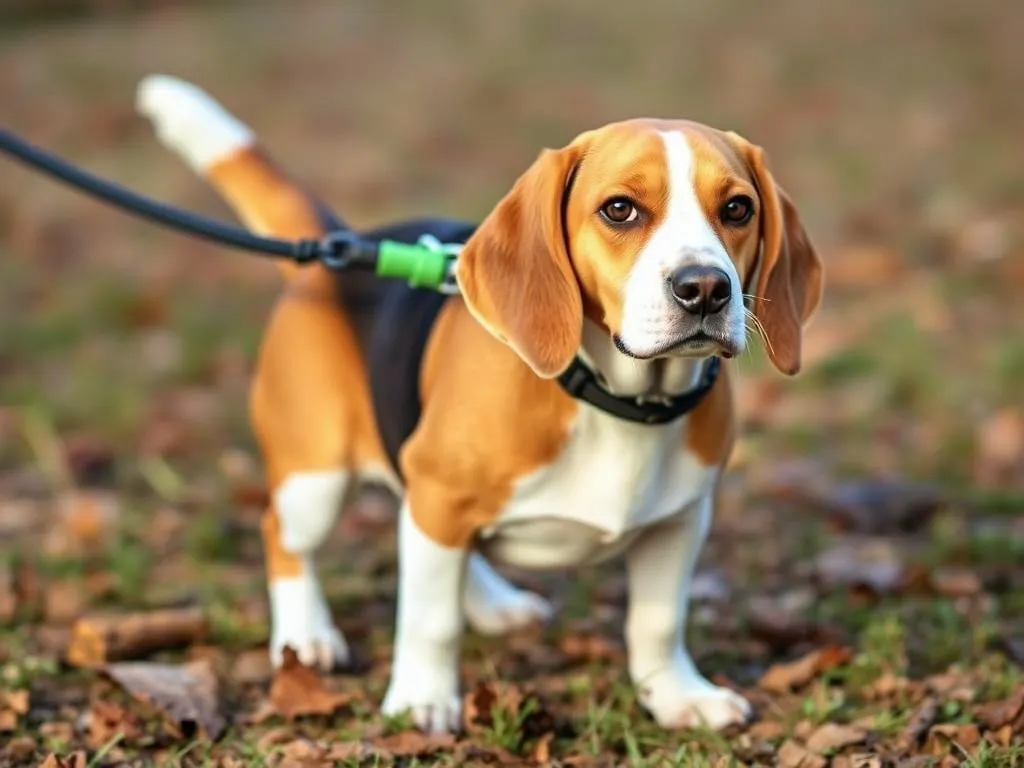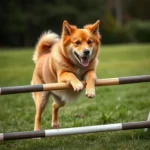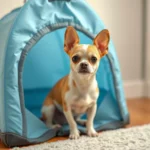
Introduction
Leash training is a vital aspect of responsible dog ownership, particularly for Beagles, who are known for their energetic nature and curious disposition. Proper leash training not only enhances your walking experience but also ensures your dog’s safety and the safety of others. However, many Beagle owners encounter challenges during this training process. This guide aims to equip you with effective strategies for leash training your Beagle, addressing common obstacles and providing solutions to help you achieve a successful and enjoyable walking experience with your furry friend.
Understanding Beagle Behavior
Characteristics of Beagles
Beagles are charming dogs characterized by their friendly demeanor and boundless energy. Known for their keen sense of smell, they have a natural inclination to follow scents, which can make leash training particularly challenging. Their curiosity often leads them to explore every nook and cranny during walks, making it essential for owners to implement effective training techniques early on.
Why Beagles Might Resist Leash Training
Beagles possess strong hunting instincts and an independent nature, which can lead to resistance when it comes to leash training. Their desire to follow interesting smells or chase after moving objects can distract them from focusing on their handler. Understanding these traits is crucial in developing an effective training strategy that accommodates their natural behaviors while promoting good leash manners.
Preparing for Leash Training
Choosing the Right Equipment
Selecting the proper equipment is fundamental to successful leash training. For Beagles, a comfortable harness is often recommended over a traditional collar. Harnesses distribute pressure evenly across the dog’s body and reduce the risk of injury. Additionally, consider using a lightweight leash, preferably around six feet long, to give your Beagle enough freedom to explore while maintaining control.
Creating a Positive Training Environment
To set your Beagle up for success, choose a quiet, distraction-free area for initial training sessions. This could be your backyard or a calm park during off-peak hours. Additionally, prepare some high-value treats or toys that will motivate your Beagle. The key is to create an environment that allows them to focus on you rather than external distractions.
Step-by-Step Guide to Leash Training a Beagle
Introducing the Leash
The first step in leash training is to help your Beagle get accustomed to wearing the leash. Start by allowing your dog to sniff the leash and associate it with positive experiences. Gradually attach the leash to their harness during playtime or while feeding them treats. This positive reinforcement will help them view the leash as a rewarding item rather than a constraint.
Basic Commands to Teach
Before embarking on leash training, ensure your Beagle is familiar with basic commands such as sit, stay, and come. These commands will form the foundation of your leash training and improve your ability to manage their behavior while walking. Use positive reinforcement techniques, such as treats and praise, to encourage your Beagle to respond to these commands effectively.
The First Walk
When it’s time for the first walk, set your expectations realistically. Be prepared for excitement and, potentially, some pulling. Start in a quiet area, and keep your Beagle close to you by using a short leash. Encourage your Beagle to focus on you by using treats and verbal praise. Remember to maintain a calm demeanor; your Beagle will pick up on your energy.
Handling Pulling and Distractions
Pulling is a common issue with Beagles, but it can be managed effectively. When your Beagle starts to pull, stop walking and wait for them to return to your side. Once they do, reward them with a treat and resume walking. This teaches them that pulling does not lead to forward movement.
Distractions are another hurdle in leash training. Beagles are easily sidetracked by other dogs, people, or interesting smells. Use techniques like redirecting their attention with treats or toys to minimize distractions. Consistency is key; if they get distracted, gently guide them back to focus on you.
Gradual Increase in Training Difficulty
As your Beagle becomes more comfortable with leash training, gradually introduce them to new environments. Start with parks and then move to busier streets. Each new setting presents unique challenges, so be patient and maintain focus. Use treats to reward good behavior and keep their attention, especially in more stimulating environments.
Common Challenges and Solutions
Dealing with Fear or Anxiety
Some Beagles may exhibit signs of fear or anxiety when first introduced to leash walking. Look for signs such as cowering, excessive barking, or reluctance to move. If your Beagle shows these signs, take a step back. Create a more positive association by allowing your Beagle to explore while still on the leash, rewarding them with treats for calm behavior. Gradually increase the difficulty of environments as their confidence grows.
Overcoming Distractions
Distractions are a major challenge for Beagle owners. Identify potential distractions in your walking environment, such as other dogs, children, or unusual smells. Training techniques like “leave it” or “focus” can help redirect their attention. Practice these commands in a controlled environment before applying them during walks. With time, your Beagle will learn to ignore distractions more effectively.
Maintaining Consistency and Patience
Consistency is crucial in any training process. Establish a regular walking schedule and practice leash training exercises frequently. Use the same commands and rewards to reinforce learning. Patience is equally important; understand that every dog learns at their own pace. Celebrate small victories, and don’t hesitate to adjust your strategies if necessary.
Reinforcement Techniques
Positive Reinforcement Strategies
Positive reinforcement is one of the most effective strategies for leash training a Beagle. Reward good behavior with treats, praise, or playtime. This creates a strong association between walking calmly on a leash and positive outcomes. Be sure to reward your Beagle frequently during training sessions to keep them motivated.
Avoiding Negative Reinforcement
Using negative reinforcement can lead to fear and anxiety in Beagles, which can further hinder their training. Instead of punishment, focus on redirecting unwanted behaviors with positive reinforcement. For example, if your Beagle pulls on the leash, redirect their attention rather than scolding them. This creates a more positive training atmosphere.
Progress Tracking and Adjustments
Keeping a Training Journal
Documenting your training progress is a valuable tool for tracking improvements and identifying areas needing more focus. Keep a training journal that includes dates, behaviors observed, rewards used, and any setbacks encountered. This will help you see patterns and adjust your training techniques accordingly.
Adjusting Training Methods as Needed
Every Beagle is different, and what works for one dog may not work for another. Be prepared to adjust your training methods based on your dog’s behavior and reactions. If you notice a particular technique isn’t yielding results, don’t hesitate to try a different approach. If challenges persist, consider seeking professional help from a dog trainer who specializes in positive reinforcement techniques.
Conclusion
Leash training a Beagle can be a rewarding experience that strengthens the bond between you and your furry companion. By understanding their behavior, preparing adequately, and following a structured training plan, you can overcome the common challenges associated with leash training. Remember to be patient and consistent, and always celebrate the small victories along the way. With dedication and love, your Beagle will learn to walk calmly by your side, making every outing a pleasant adventure.









